
In X-Men ’97, we have compiled a list of the greatest Easter eggs from Marvel Comics, including beloved storylines, iconic characters, and references to famous cover art.
One of the most enjoyable aspects of X-Men ‘97 are the numerous nods throughout the series. It has been packed with references to the original show and the comics it is adapted from.
Some of these allusions may be easily recognizable, particularly if you have read a few X-Men comics from the 1990s. However, there are also some extremely obscure references to forgotten X-Men characters and noteworthy storylines.
For those seeking the latest updates, we have compiled a comprehensive list of all the Easter eggs discovered thus far in X-Men ’97.
X-Men ‘97 Easter Egg Guide
Table of Contents
- Episode 1: To Me, My X-Men
- Episode 2: Mutant Liberation Begins
- Episode 3: Fire Made Flesh
- Episode 4: Mode/Lifedeath Part
- Episode 5: Remember It
This article contains a comprehensive list of all the Easter eggs featured in X-Men ’97, including references to the comics, movies, and original animated series. It also includes a list of every character that Morph transforms into and nods to iconic cover art throughout the series.
Episode 1: To Me, My X-Men
- The credits are a riff on the original but with some updates. The order is shifted, and character designs are updated. Morph and Bishop are also added to the line-up, along with a new interstitial of Morph running from Mr. Sinister.
- The initial wanted poster showcases Marrow, a member of the X-Men who gained recognition towards the end of the original animated series. She is a Morlock with a unique mutant ability that causes her bones to grow at an uncontrollable rate, which she can utilize as weapons.
- Storm’s mohawk has become as iconic as her, debuting as a look in the ‘80s. Today, it typically shows back up to highlight when she’s less in a goddess mentality and more rebellious.
- Cyclops yet again feigns defeat in the most ‘90s way possible, shouting, “I surrender…NOT!” at his captors in a nod to the original X-Men: The Animated Series pilot.
- The newspaper has a headline asking if Spider-Man is a mutant. Spidey’s a friend to the X-Men in the comics, but his powers came from the spider bite, not the X-Gene, so he’s officially a mutate, not a mutant.
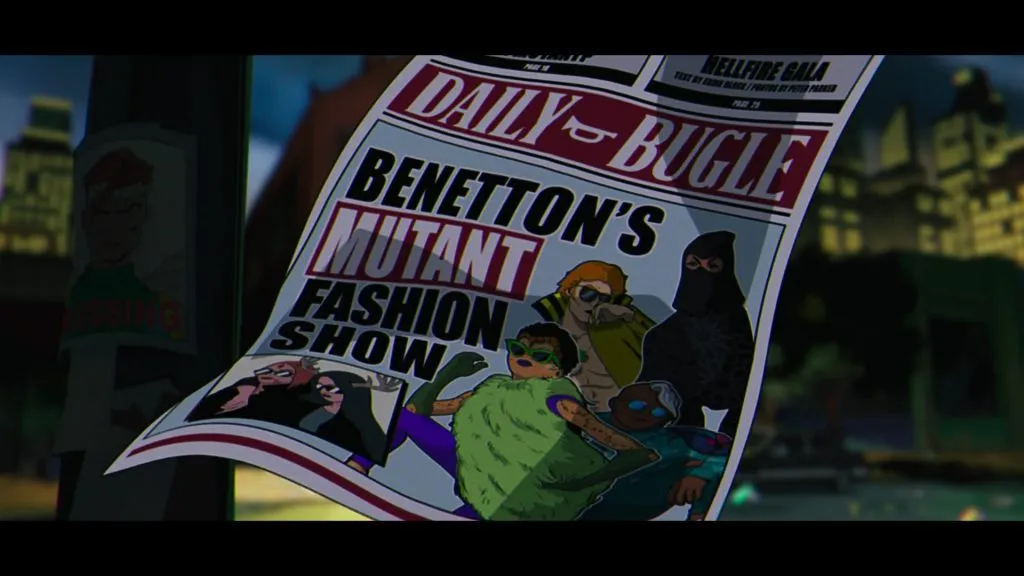
The existence of the Hellfire Gala is teased in a newspaper clipping.
- Morph shapeshifts into a walking Xavier, which no one really bats an eye at. In the comics, Xavier often regains the ability to walk, though he does find himself back in the wheelchair in most cases.
- Rogue’s more casual attire is a nod to her ‘80s uniform.
- The paper also references the Hellfire Gala, an annual ball where the X-Men elect their new Krakoa representatives. It also advertises a mutant fashion show, which appears to feature Banshee, Dust, and Maggott, among others.
- Jubilee asks Sunspot if he can “shoot gold balls from your body.” This is a nod to Gold Balls, a member of Cyclops’ Uncanny X-Men following Avengers vs. X-Men. In the modern era, he’s taken on the name Egg, as his gold balls are used to create the eggs for mutant rebirth.
- In Xavier’s office, there is a portrait of the original five X-Men in their training uniforms. However, in X-Men ’97, the timeline is altered, with Cyclops and Jean being the first two members of the team, followed by Beast, Iceman, and Angel. This is in contrast to the comics, where Jean was the last member to join the team.
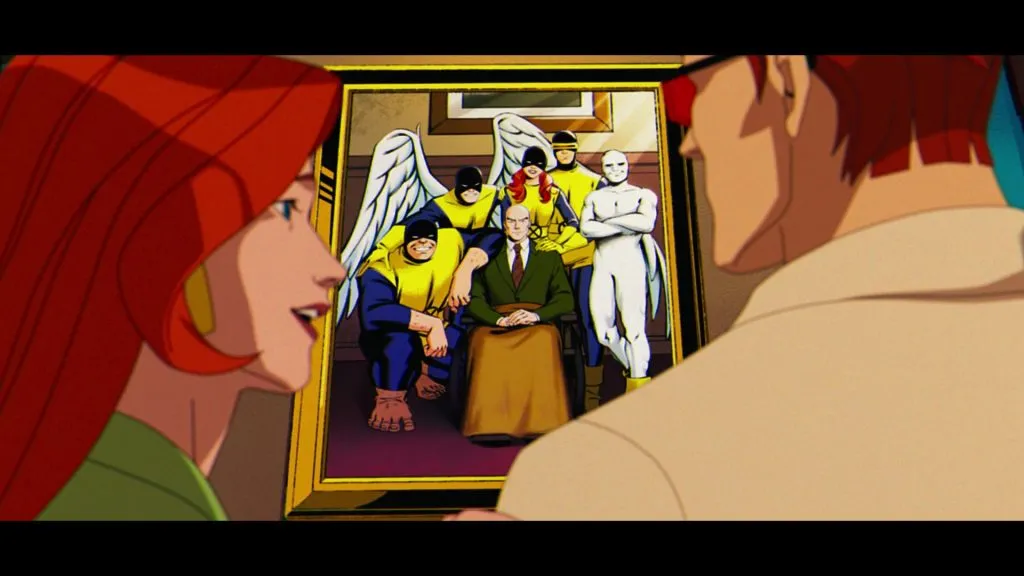
A portrait in Xavier’s office shows the original X-Men in their first uniforms.
- In the bar, Morph shapeshifts into his original form. For X-Men ‘97, Morph’s appearance was redesigned to match his comic version.
- Morph shapeshifts into Archangel. Angel was an original member of the X-Men, but Apocalypse corrupted him into his Horsemen of Death, which gave him blue skin and razor-sharp wings.
- “The phrase “To me, my X-Men!”has been portrayed as the quintessential call to action for the X-Men, but it was actually a relatively new attempt at creating a catchphrase for the team. While variations of it have been used since the first X-Men comic in the 1960s, it didn’t gain widespread recognition until the 1990s.”
- Morph shapeshifts into the Blob, a member of the Brotherhood of Evil Mutants who is resistant to physical forces and cannot be moved.
- Cyclops attempts to retire from the X-Men to raise his son with Jean Grey. In the comics, Cyclops has left the X-Men on a few occasions but did specifically leave at one point to raise his son, Nathan, with then-wife Madelyne Pryor. He returned to the fold as a member of X-Factor when Jean was found alive.
- The concept of the Last Will & Testament of Charles Xavier causing havoc for the X-Men stems from a story of the same name. In that story, the school is left to Scott, who, at this point, was an outcast after being responsible for Xavier’s death in Avengers vs. X-Men.
X-Men: The Animated Series Episode 2 Easter Eggs
- Setting a standard for the series, the title sequence is updated to reflect the roster. Professor Xavier’s card is removed, and Magneto is positioned as the leader. New scenes of Magneto on Asteroid M and Storm fighting Callisto are added.
- We see the Morlocks, specifically Callisto and Leech. They’re recurring characters from both the comics and X-Men: The Animated Series, a race of mutants who live in the sewers. Storm is occasionally considered their leader because she beat Callisto in a duel, but Callisto leads them in her absence.
- We see Magneto’s new costume, a sleeveless purple number with a giant M emblazoned on it. He wears a similar get-up in the ‘80s when he reforms and becomes the X-Men’s leader.
- Magneto transformed Genosha into a sanctuary for mutants, as depicted in the comics where it served as a safe haven and was eventually granted to him by the UN to establish a nation for mutants. However, in present times, Genosha lies in ruins, having been devastated by Sentinels under the command of Cassandra Nova.
- While Jean and Storm are packing, Jean is seen holding her classic Marvel Girl costume. She’s returned to this look on more than a few occasions, such as when she fought for her life against the Shi’ar in The Dark Phoenix Saga and the early Krakoan Age stories.
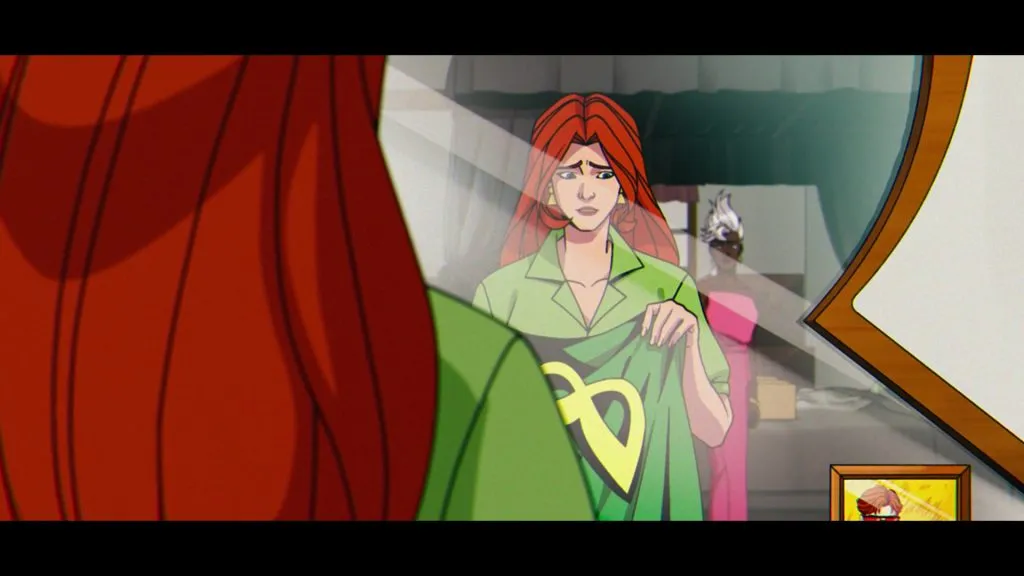
Jean is shown packing her classic Marvel Girl costume.
- Magneto reveals his helmet is designed to block Charles’ telepathy. This is a retcon in line with the comics, which introduced a similar function after the success of the first X-Men film. Originally, Magneto’s helmet did allow him some control over human minds, but it didn’t block telepathy until the movies did it.
- Rogue and Magneto’s relationship is hinted at here. The two have a controversial pairing that only lasts a few months but does result in Magneto proposing marriage. Rogue eventually marries Gambit in the Krakoan Age.
- The bulk of this episode is based on Uncanny X-Men #200‘s The Trial of Magneto. The comic also sees Magneto on trial for his crimes against humanity, where he single-handedly saves both the Judge and Xavier from an attack during the trial. Much like in The Animated Series, Xavier is taken away by Lilandra for medical treatment, with Magneto taking charge of the X-Men.
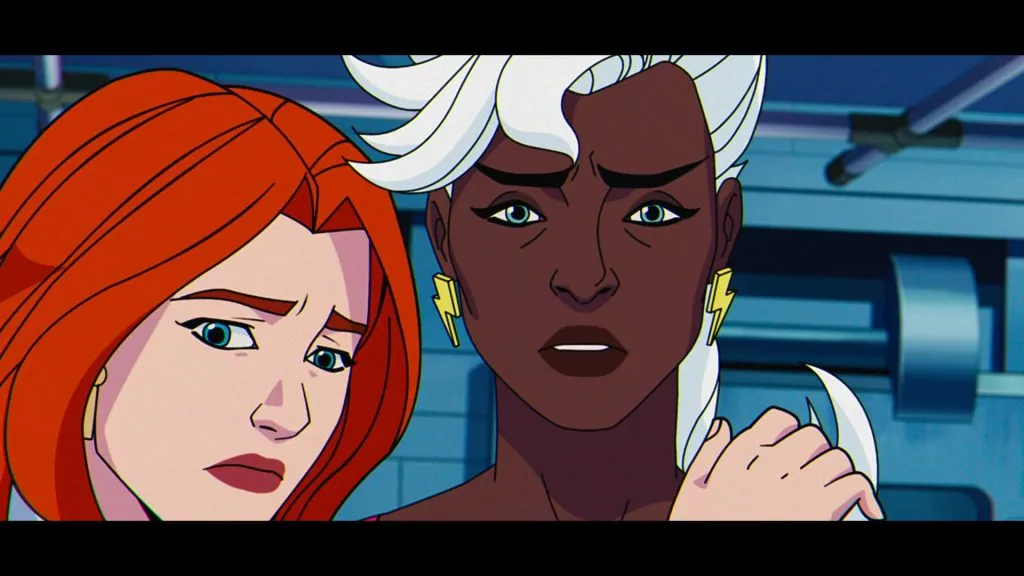
Storm losing her powers was the basis of an important years-long arc for the character.
- Storm losing her powers to a gun designed to neutralize mutants comes from Uncanny X-Men #185. In the comic, Henry Peter Gyrich tries to neutralize a rampaging Rogue’s powers, but Storm is accidentally shot instead.
- X-Cutioner is used here as a figurehead for the Friends of Humanity. In the comics, he works independently of any team, though his goal of mutant eradication is the same.
- Scott and Jean name their son Nathan Charles Summers after the late Xavier. In the comics, he’s Nathan Christopher Charles Summers, having also been named after Cyclops’ father, Christopher Summers/Corsair.
- Morph shapeshifts into Sabretooth in an attempt to cheer up Wolverine.
Episode 3: Fire Made Flesh
- Following the trend of changing the intro, the de-powered Storm is no longer present. Additional scenes of Magneto fighting the X-Men and Jean as the Dark Phoenix have been added.
- There’s also a shot of Sunspot running into a fence while being chased by Sentinels. A similar scene happens in the original series’ intro, but with Jubilee.
- In the comics, Scott was not tricked into having a child with a clone of Jean. Instead, he married Madelyne Pryor, a woman who looked remarkably like Jean and started a family with her. He left Madelyne after Jean was resurrected.
- There are a lot of flashbacks to The Animated Series seen here in Jean’s memories, including Jean and Scott being saved from the Morlocks and Jean becoming The Dark Phoenix.
- Morph transforms into Spyral, a mutant with six arms who resides in Mojoverse.
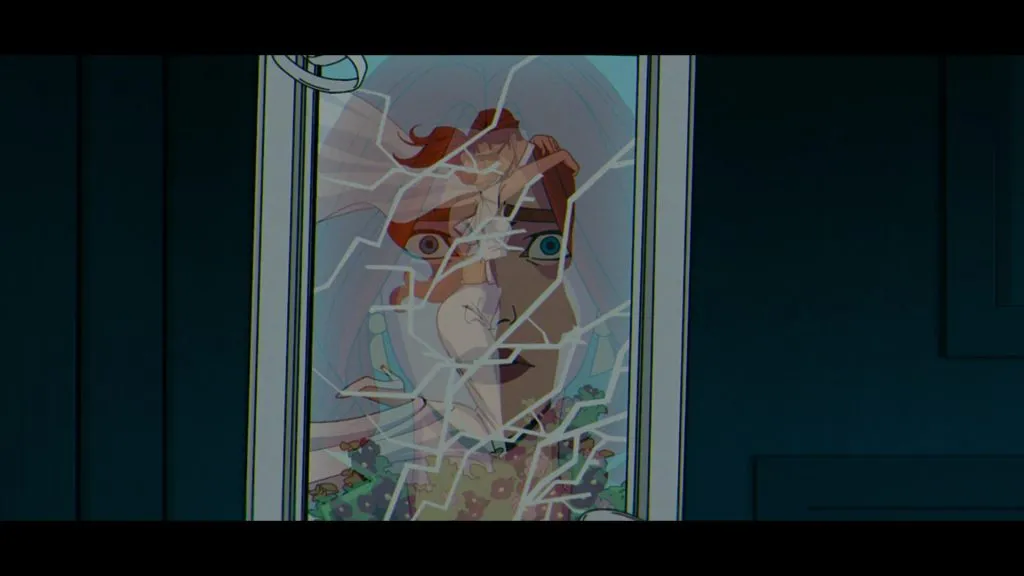
Cyclops and Jean Grey’s wedding photo is a recreation of a classic comic book cover.
- Scott and Jean’s wedding photo is a direct reference to the cover of X-Men #30, the issue in which they were finally married.
- The clone of Jean references her actions as “an inferno” and takes on the name Goblin Queen. This is a nod to the 1989 storyline Inferno, where Madelyne bargains with demons from Limbo to find Nathan. In the process, she learns that she is a clone of Jean, then allies with Limbo and becomes the Goblin Queen.
- In the visions, Bishop sees his sister, Shard. Shard is a mutant in the future who can turn light into concussive force blasts.
- The sighting of Magneto and Rogue by Gambit appears similar to the cover of Uncanny X-Men #274. In that story, Magneto and Rogue were stranded in the Savage Land and almost developed a romantic connection. However, Rogue ultimately left when she witnessed Magneto committing another act of violence.
- When talking about Sinister, Morph shifts into a more dour face with bags under its eyes. This is the look Morph had after Sinister revived him and brainwashed him.
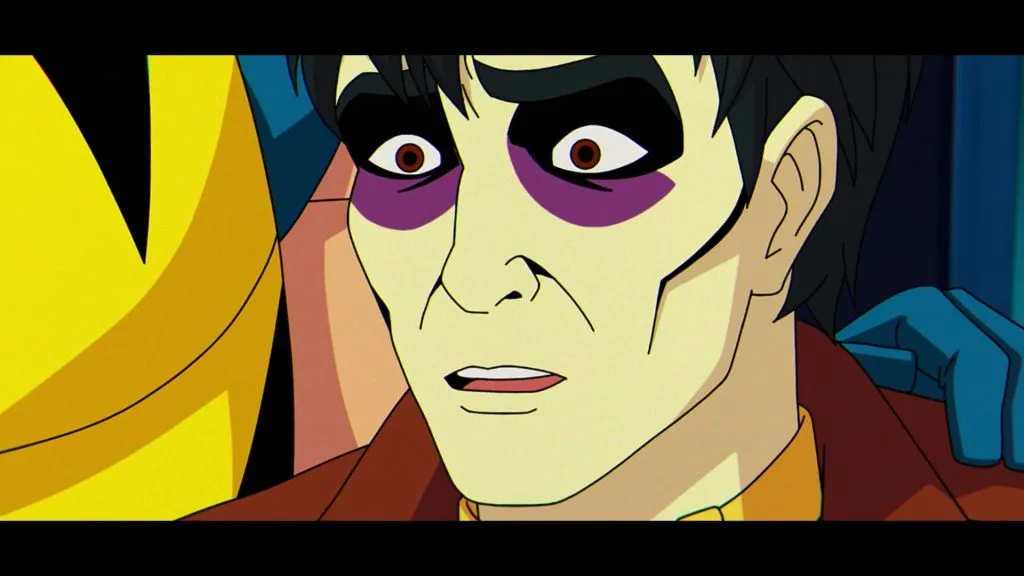
Morph briefly reverts to his evil face from Season 2
- Sinister’s hint at Nathan’s destiny may be an allusion to his fate as one of The Twelve. Nathan is destined to fight Apocalypse in one possible future.
- Morph shifts into Illyana Rasputin/Magik, the sister of Colossus, as well as her Darkchylde form. Illyana is a half-demon and bearer of the Soulsword who factored heavily in the original Inferno. Today, she’s often considered the ruler of Limbo and serves as Cyclops’ war general on the X-Men.
- Jean’s retcon origin is referenced. Originally Jean only had low-level telekinesis, but a retcon established her as a powerful telepath, with Xavier making mental safeguards so her power wouldn’t overwhelm her.
- Nathan is ravaged by a techno-organic virus and sent into the future for help. In the comics, Nathan is raised in the future and trained to use his telekinesis to keep the virus in check. He becomes Cable, a soldier from the future who is sent back in time to help fight Apocalypse, eventually forming the mutant paramilitary team X-Force.
- Scott stresses he won’t abandon his son like his father did him. He’s referring to the space pirate Corsair. In Cyclops’ origin, he’s thrown by his parents from a crashing plane to save him. In fact, Scott’s parents are abducted, with his mother being killed shortly after and his father becoming a spacefaring pirate.
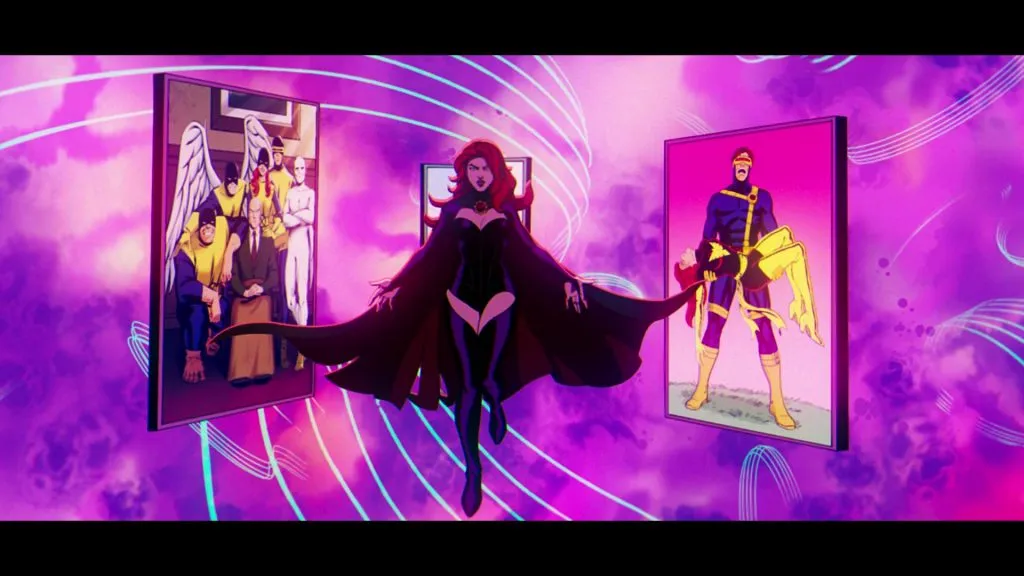
The image of Scott cradling Dark Phoenix is one of the most referenced covers in comics.
- The image of Scott holding a dead Phoenix from Uncanny X-Men #136 is featured in Jean’s visions. It’s become an incredibly iconic comic book image and is considered one of the most referenced covers in comics.
- Jean’s clone takes on the name Madelyne Pryor, the name she believed was her real name in the comics. Madelyne being a clone of Jean in the comics is actually a massive retcon. The original plan was for Jean to stay dead, with Cyclops marrying Madelyne and retiring from superheroics. The decision to create X-Factor, a new title that started the original X-Men, changed this. Madelyne was later retconned into being a clone of Jean designed to manipulate him.
- Storm is wearing her black leather outfit at the episode’s end. Storm first rocks the look, along with her mohawk, in Uncanny X-Men #173, changing up her appearance after spending a night on the run with the thief Yukio in Japan. These days, it’s more commonly associated with her time in Dracula’s thrall thanks to the character Bloodstorm.
- Storm meets Forge, who promises to help her get her powers back. Forge has the mutant ability to build anything. In the comics, he designed the gun that took away Storm’s powers but regretted its use.
X-Men 97: Episode 4 Easter Eggs
- The intro is updated to include shots of Jubilee and Longshot fighting Mojo, Forge with X-Factor, and Xavier confronting the Hellfire Club.
- Magneto references his parents dying when he was a child. In his comics origin, they were killed shortly after the German Invasion of Poland. Magneto, the sole survivor of his family, was imprisoned in Auschwitz afterward.
- Genosha entering the UN is brought up. In the comics, Genosha was briefly given to Magneto to form a mutant nation as a gesture of goodwill. It was destroyed by Cassandra Nova.
- Jubilee has a Longshot doll in her room, his only appearance in this episode outside of the intro. Longshot is a Mojoverse mutant and freedom fighter with the ability to manipulate luck. He last appeared in X-Men: The Animated Series 3.10, Longshot. In that episode, both Longshot and Mojo escape into the real world and are sent back with help from Wolverine, Rogue, and Jubilee.
- The Motendo console and logo are modeled after a Model 1 Sega Genesis.
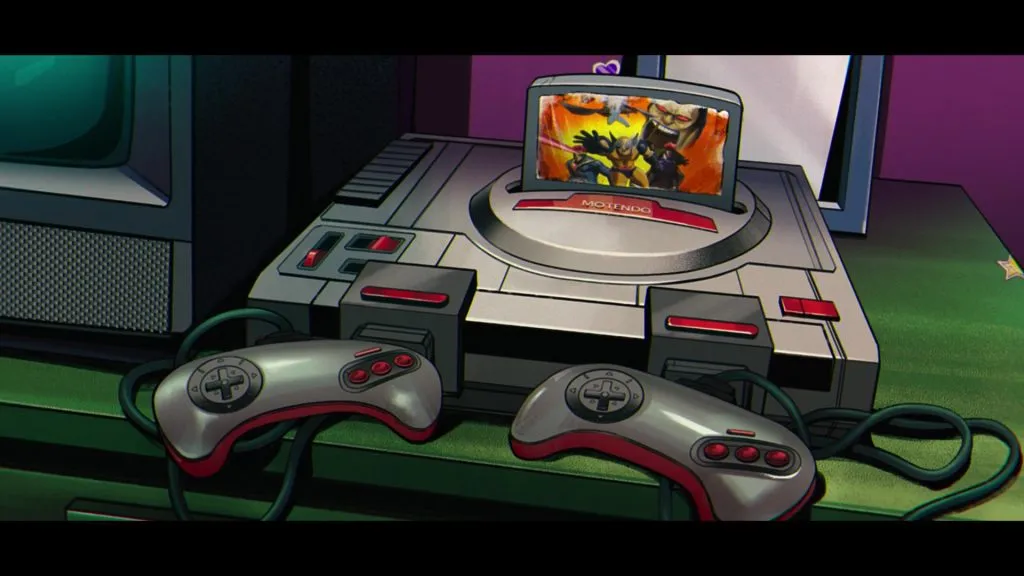
The Motendo console is inspired by the original Model 1 Sega Genesis.
- The art for the Motendo cartridge is based on 1993’s X-Men, developed by Western Technologies and published by Sega. Today, it’s mostly remembered for its Mojoverse level, which required players to physically restart their consoles in order to proceed.
- The episode contains many allusions to The Matrix, including the dial-up sound when Jubilee and Roberto are transported into the game, using a landline phone to exit the world, and the concept of a rogue program upsetting the balance of the world. Mojo’s comment that “if you die in the game, you die in real life” also echoes Morpheus’ warning to Neo.
- Roberto refuses to use his powers because his family might see them. In the comics, Roberto’s father, Emmanuel Da Costa, is a member of the Hellfire Club.
- Jubilee and Roberto are transported back in time to Genosha, just like in X-Men: The Animated Series 1.07, Slave Island, where they were both held captive alongside Storm and Gambit. On Genosha, they encounter familiar faces such as Sunspot, The Blob, and Domino, who are also prisoners.
- Even though we only catch a glimpse of his outfit, Thunderbird makes an appearance in the Genosha flashback, which is a nod to his cameo in the original episode. Due to the credits being worked on during the production of that episode, Thunderbird was accidentally added to Magneto’s Brotherhood of Evil Mutants to complete the team’s roster.
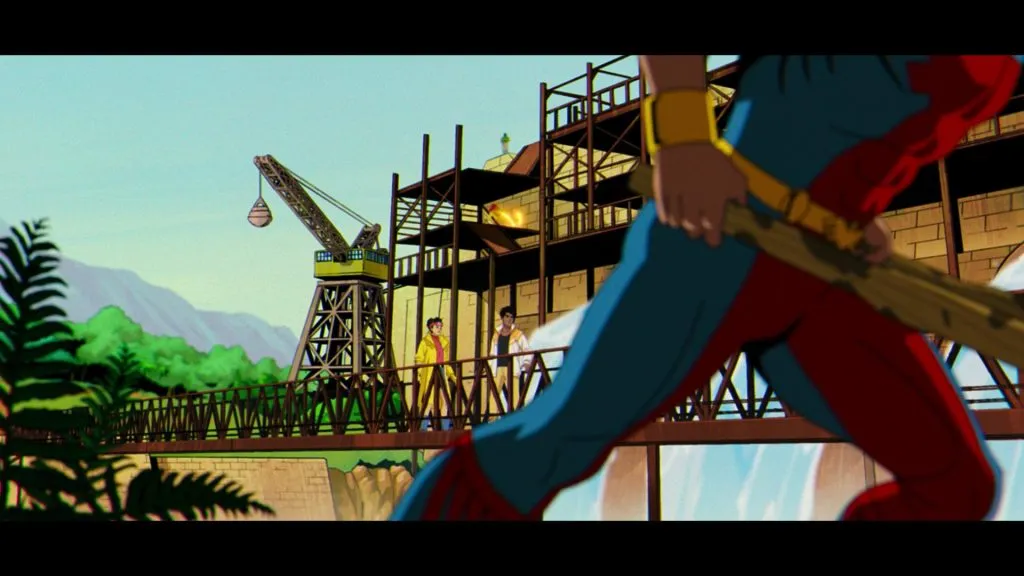
Thunderbird returns for a cameo, referencing his appearance as a slave on Genosha.
- Storm, Jean Grey, Professor X, Magneto, and Cyclops are all featured in the “Who’s the Boss?” graphic. All five characters have led the X-Men, occasionally fighting each other for the right.
- Darwin, Northstar, and Forge feature on the “A Different World” graphic. This would mark Darwin’s animated debut, as he wasn’t created until the Deadly Genesis event.
- The crux of this episode–the Motendo game starring Jubilee–is a send-up of classic Konami arcade beat-em-ups, including Teenage Mutant Ninja Turtles: Turtles in Time and, of course, 1992’s X-Men, which used character designs based on the previous animated series pilot, Pryde of the X-Men.
- The poster of mutants in the background of the first stage is a direct homage to the Uncanny X-Men #141 cover art. In the story, Days of Future Past Part 1, various mutants on the poster are marked as having been captured or slain.
- The boss of the Savage Land stage is Sauron. In the comics, Karl Lykos is an unassuming scientist with a need to feed on life energy. Taking too much mutates him into Sauron, a human/pterodactyl hybrid with hypnosis powers who seeks to destroy the world.
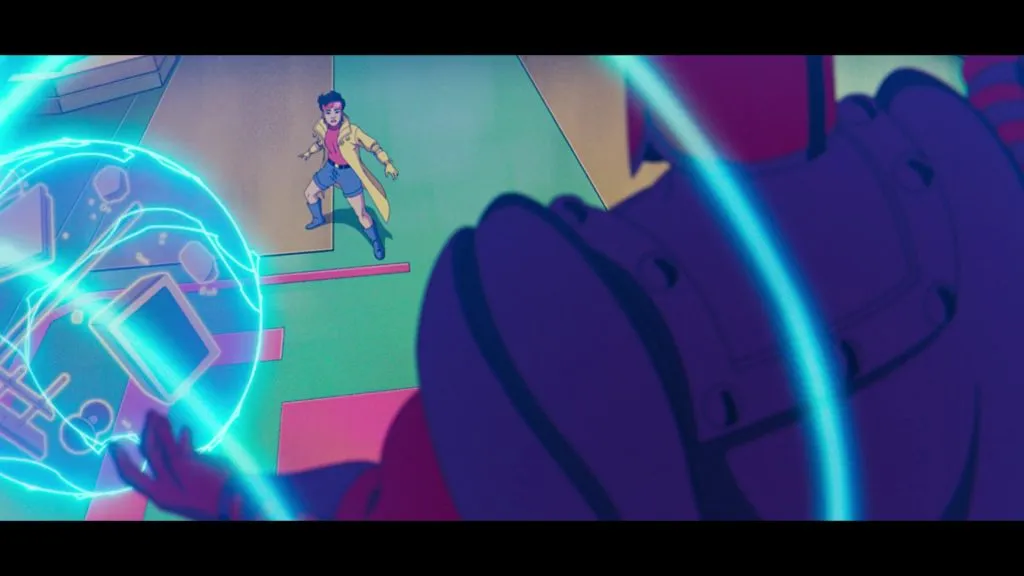
Jubilee fights Magneto on his space hideout, Asteroid M.
- The final stage is on Asteroid M. In early X-Men stories, Magneto lived in a base called Asteroid M, which, in fact, referred to any of the multiple bases he built in space over the years.
- The arcade cabinet Mojo breaks out of is based on the six-player X-Men arcade game cabinet by Konami.
- The second half of the episode, Lifedeath – Part 1, is based on a similar story from Uncanny X-Men #186. In the original story, Storm is missing after having been shot by Henry Peter Gyrich; unbeknownst to the X-Men, she has lost her powers and is being nursed back to health by Forge. The scene of the two sharing a meal and discussing Forge’s past closely resembles a similar scene from the comic.
- Forge says he lost his leg and hand in “the war.” In the comics, Forge was a Vietnam War veteran and Cheyenne medicine man. He summoned demons to avenge his fallen comrades in a fit of anger. Having a change of heart, he tried to bomb the portal the demons were coming from, losing his arm and leg in the process.
- We see an image of Forge with X-Factor–Quicksilver, Havok, Polaris, Strong Guy, Wolfsbane, and Madrox the Multiple Man. This incarnation of the team appeared in X-Men: The Animated Series 3.11, Cold Comfort. Storm was absent from that episode, so it makes sense she doesn’t know Forge.
- Storm looks noticeably uncomfortable in Forge’s machine. In both the comics and animated series, Storm suffers from claustrophobia after being trapped under rubble as a child.
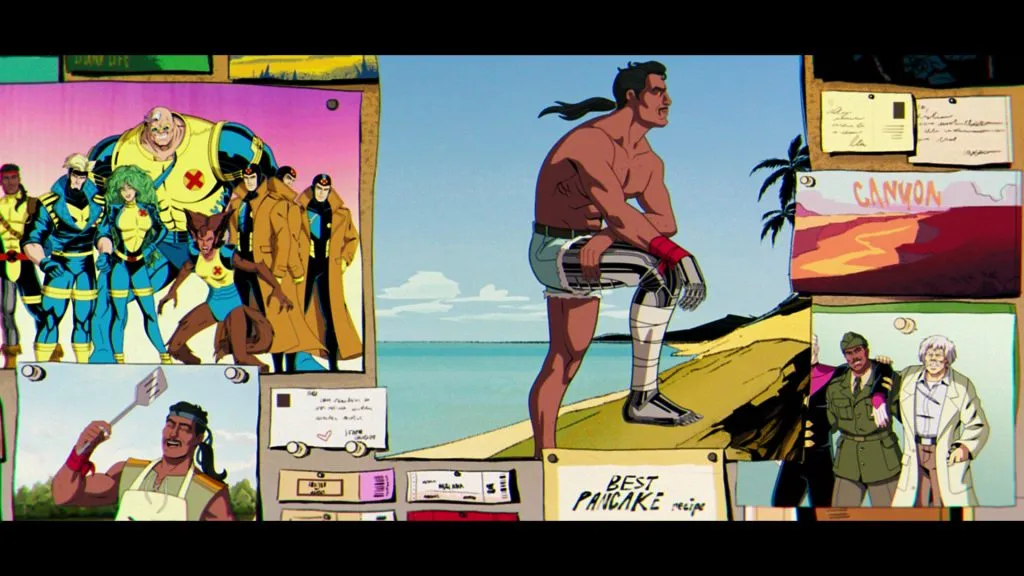
Forge’s photos show him with X-Factor and tease a connection to Bastion.
- There’s another photo of Forge with Gottfried Adler and a man in a black and purple costume. The costume is a match for Bastion, a prominent X-Men villain from the ‘90s. Bastion is an android based on the designs of Master Mold and Nimrod. He uses the fear following the Onslaught event to convince the government to enact the anti-mutant program Operation: Zero Tolerance.
- Forge reveals his designs were used to build the Mutant Inhibitor Collars. In the comics, Forge actually designed the gun that rendered Storm powerless, a fact she only found out by accident rather than him confessing.
- The Scottish scientist is likely Gottfried Adler, who was said to have developed Genosha’s Inhibitor Collars in X-Men: The Animated Series 1.09, The Cure (though Adler in that episode is actually Mystique in disguise).
- As they flee from a demon, Storm and Forge find themselves falling through the floor of his house, leaving the episode on a suspenseful cliffhanger. The comic version features Storm triggering Forge’s advanced holographic technology, causing her to experience the traumatic event where he lost his limbs in the war.
Episode 5: Remember It
- The introduction has been revised to feature a scene in which Cable is fleeing from Apocalypse, while Gambit and Nightcrawler engage in a fight.
- Trish Tilby is a minor character from the comics who debuted while investigating X-Factor. She briefly begins a relationship with Beast that falls apart during New X-Men when he further evolves into a more feline form.
- Leech of the Morlocks returns. He’s a unique character with the mutant power to suppress other X-genes. In this episode, he’s often seen with two mainstay X-Men: Pixie/Megan Gwynn, who can teleport and fly, and Glob/Robert Herman, whose body is made of living wax.
- The X-Men character who can make ice cream may be a sly Iceman cameo, but they do also call to mind Soft Serve, a mutant on Krakoa whose excrement was ice cream.
- The mutant with antlers is Nature Girl/Lin Li, who joined the Jean Grey Institute during Wolverine’s tenure as Headmaster.
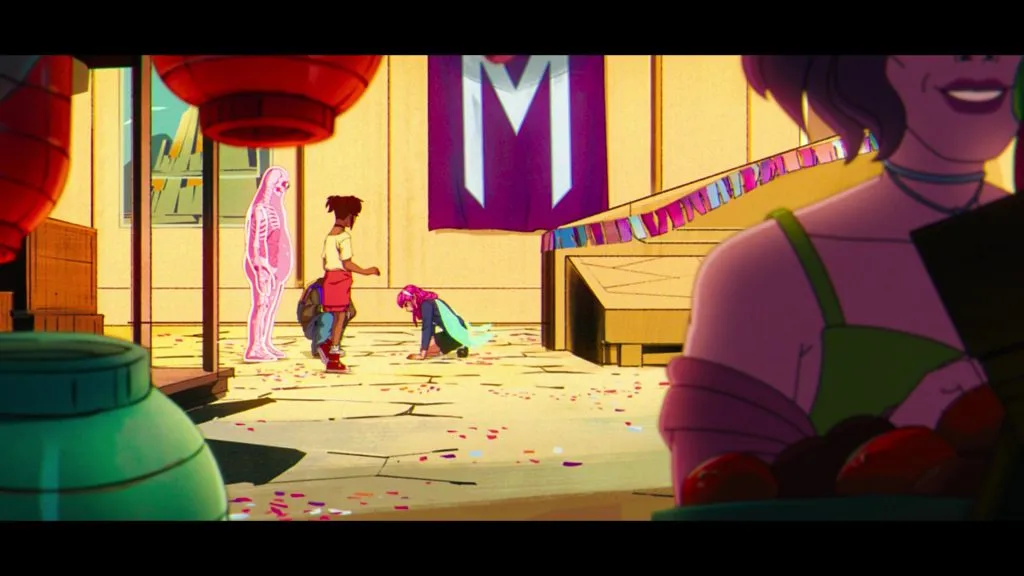
There’s a number of surprise cameos on Genosha, including Blink, Nature Girl, Pixie, and Glob.
- Though we don’t see much of her, the girl with purple skin and a green shirt seems to be Blink, a fan-favorite mutant from Age of Apocalypse. She can throw energy daggers that create portals.
- Genosha doesn’t typically have a statue of Magneto and Xavier, though a memorial to him was raised at some point following Genosha’s destruction.
- Nightcrawler makes his return and is mentioned to be working with Genosha’s communities of faith. In the original series, he was raised by monks. In the comics, Nightcrawler is devoutly Catholic and moonlights as a priest. During the Age of Krakoa, he briefly attempted to start a new mutant religion.
- The dancers in the town square consist of Jamie Madrox/Multiple Man, who can create and reabsorb duplicates of himself; Exodus/Benet du Paris, who has telekinetic and telepathic powers that are enhanced when others have faith in him; Dazzler, who can convert sound into light blasts.
- Rogue is greeted by Boom-Boom/Tabitha Smith, an X-Force member who can create explosive orbs.
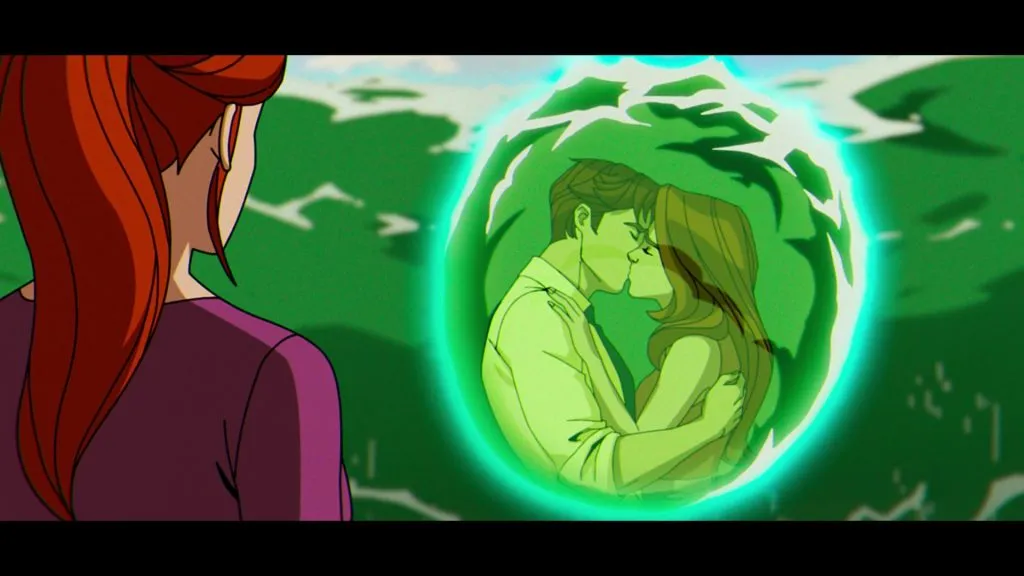
Jean and Scott’s story about their picnic references a key comic book moment.
- Jean and Scott’s story about a picnic where she held back his powers with hers references a story that took place in Uncanny X-Men #132.
- Magneto becoming the leader of Genosha took place several times in the comics, with him first being gifted the island by the UN.
- Moira MacTaggart and Sean Cassidy/Banshee are members of the council. Moira is Xavier’s former lover, while Banshee is a former Interpol agent who can generate sonic screams. He joined the X-Men in Giant-Size X-Men #1.
- Hellfire Club members White Queen and Sebastian Shaw return to the show. They last appeared in the original series’ adaption of Dark Phoenix Saga.
- The psychic affair between Scott and Madelyne is reminiscent of Scott’s affair with White Queen during New X-Men. Scott and Emma were a couple for years following the affair, though he eventually reconnected with Jean.
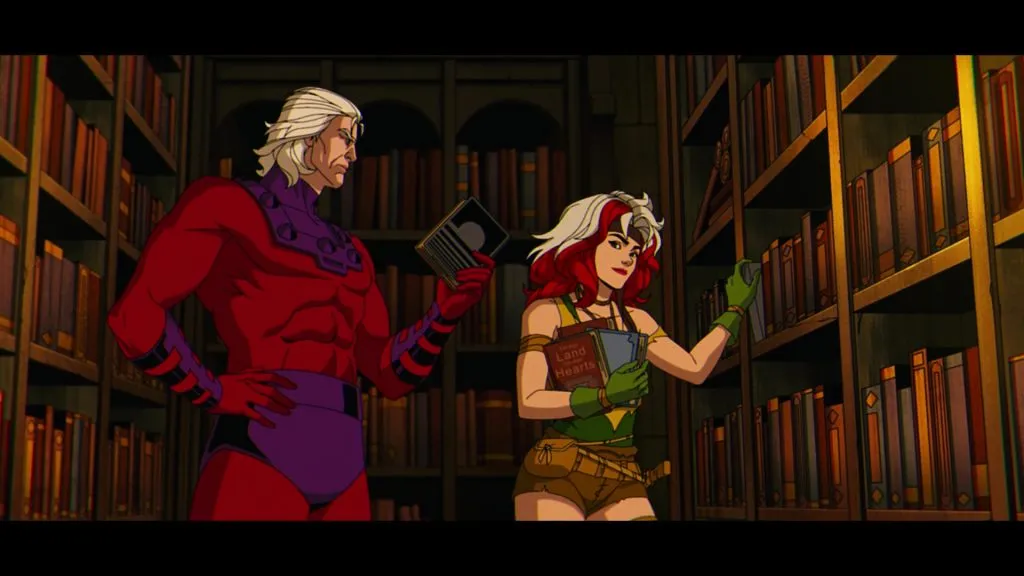
Rogue and Magneto’s time in the Savage Land is pulled straight from the comics.
- Rogue’s backstory and the costume she wears here are from an Uncanny X-Men story where she was stranded in the Savage Land and first kindled a relationship with Magneto.
- The Watcher is visible in the stars above the party. In the comics, the Watcher is sworn never to interfere but may make himself seen before a great event is about to occur.
- Among the mutants seen when Cable enters the party is Marrow, a mutant who can grow and break off bones.
- The Genosha Holocaust happened in the first arc of Grant Morrison’s New X-Men run. The original was spearheaded by Cassandra Nova, an energy deity who had taken on many elements of Xavier’s life.
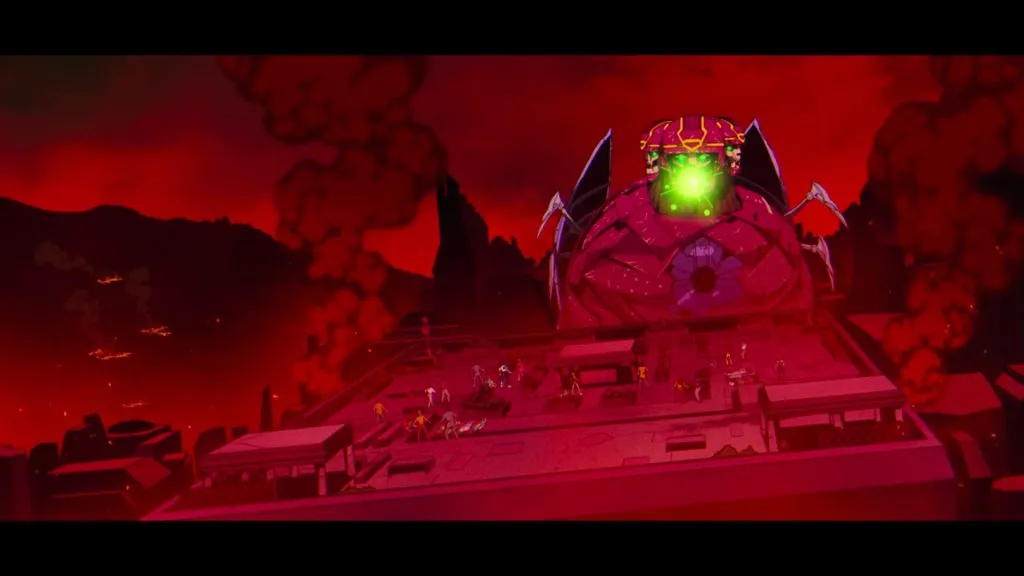
The Wild Sentinel was a killing machine designed specifically to destroy Genosha by Cassandra Nova.
- The massive Sentinel matches the design of the Wild Sentinel, a design created by Cassandra Nova and Donald Trask. Nova forced Trask to design it, then used it to attack Genosha.
- Despite never being explicitly stated in X-Men ‘97 or the original series, Magneto’s flashback to his childhood in a concentration camp reveals that he is a survivor of the Nazi holocaust. He was orphaned and imprisoned in Auschwitz during this tragic time.
- A death toll is never mentioned, but the number of mutants killed in the Genosha attack in the comics is said to be 16 million.
- Gambit’s death is unusual, as he’s one of the few X-Men to never actually die and be revived. However, he was briefly Death, the Horseman of Apocalypse in the comics. Considering Cable’s cameo seems to hint at Apocalypse’s return, could this be setting up Gambit as a horseman?
The final issue of X-Men Krakoa Age features Magneto’s return to life, Iron Man’s downfall, and other major events. For those interested in related reading material, Marvel Comics has released a Blood Hunt reading guide with tie-ins to Spider-Man, the return of Morbius, and more. Additionally, the upcoming X-Men: From the Ashes will introduce new X-teams, costumes, and address the fate of Xavier’s School. Fans of Wolverine won’t want to miss the Sabretooth War, which has been described as his bloodiest story yet with numerous casualties.




Leave a Reply